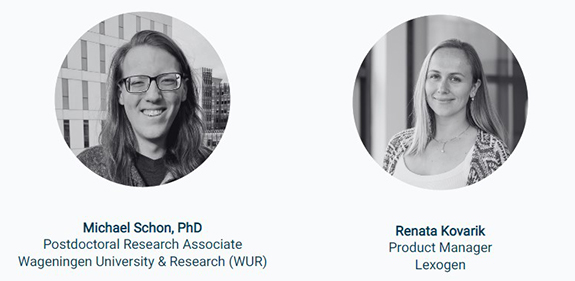[On-Demand Webinar]
An end-to-end rethinking of transcript assembly
Join us for a two-part webinar presentation where we will explore the critical role of accurate transcript annotation in understanding gene function and regulation.

What You Will Learn:
In the first part of the webinar, we will take a deep dive into the history of RNA sequencing technology and the challenges inherent in gene annotation.
The second part will focus on Bookend, a new software package designed for precise end-guided transcriptome assembly.
Don't miss out on this opportunity to learn about the benefits and limitations of different RNA sequencing protocols and how Bookend can help you reconstruct transcript isoforms with unprecedented accuracy.
An accurate transcript annotation is critical for understanding gene function and regulation, and annotation errors can affect every step of data analysis downstream. This two-part webinar presentation will delve into the history of technologies for cataloging and sequencing RNA isoforms, and provide a breakdown of Bookend—a new software package for precise end-guided transcriptome assembly.
Register now to take your data analysis downstream to the next level!
The first part of the talk walks through the history of RNA sequencing technology and the strategies that were developed to assemble a complete picture of the transcriptome from RNA fragments. The discussion touches on the challenges inherent in gene annotation, benefits and limitations of different RNA sequencing protocols, and techniques for evaluating how accurately an assembly reflects the true RNA population.
The second part of the talk concentrates on Bookend, a software package designed for integrative assembly from short-read, long-read, and end-capture RNA sequencing experiments. By incorporating models of transcript start and end sites into the assembly process, Bookend is capable of reconstructing transcript isoforms with unprecedented accuracy. We detail what data types are needed to create reference-quality isoform annotations, and show that leveraging multi-sample assembly enables novel transcript discovery directly from single-cell sequencing experiments.
Our product manager Renata Kovarik briefly introduces the Lexogen product used in this study (SIRVs) and focuses on what made this product especially suited for this (and similar) research questions.
Fill out the form and watch our webinar anytime, anywhere 👇
Meet The Speakers
-1.png?width=275&height=275&name=White%20Circle%20Profile%20Photo%20Instagram%20Post%20(5)-1.png)
Michael Schon, PhD
Postdoctoral Research Associate
Wageningen University & Research (WUR)
Michael Schon obtained his PhD at the Gregor Mendel Institute, part of the Vienna BioCenter in Austria. During this time he developed molecular and computational methods to tackle the challenges of working with very small amounts of RNA. These techniques were used to gain a detailed understanding of gene regulation during plant embryo development, including the first RNA degradomes in plant embryos. Now a postdoc at Wageningen University in the Netherlands, he is working to better understand the roles of long noncoding RNAs during plant development.
.png?width=275&height=275&name=White%20Circle%20Profile%20Photo%20Instagram%20Post%20(7).png)
Renata Kovarik
Product Manager
Lexogen
Renata is a Product Manager at Lexogen with a great interest in RNA biology and novel technologies used in research. She carried out her PhD at the Medical University of Vienna, where she studied RNA modifications and their impact on the immune response. Previously, Renata received her Master of Molecular Biology and Genetics at Masaryk University in Brno, focusing on small and long non-coding RNAs in cancer. She also expanded her knowledge by doing several internships in cancer research, immunology, and bioinformatics.

